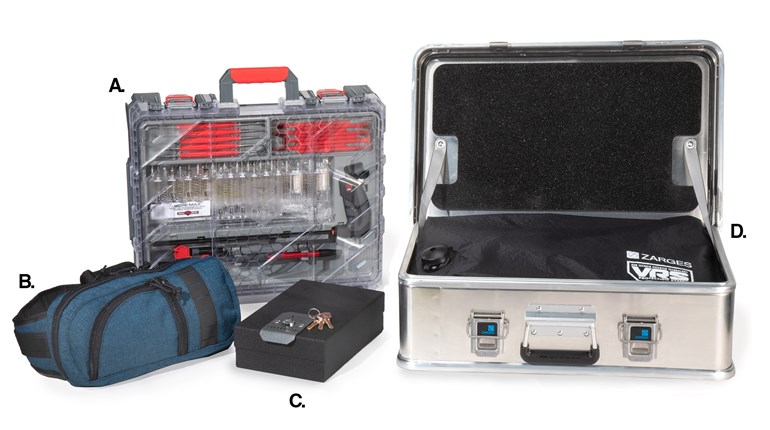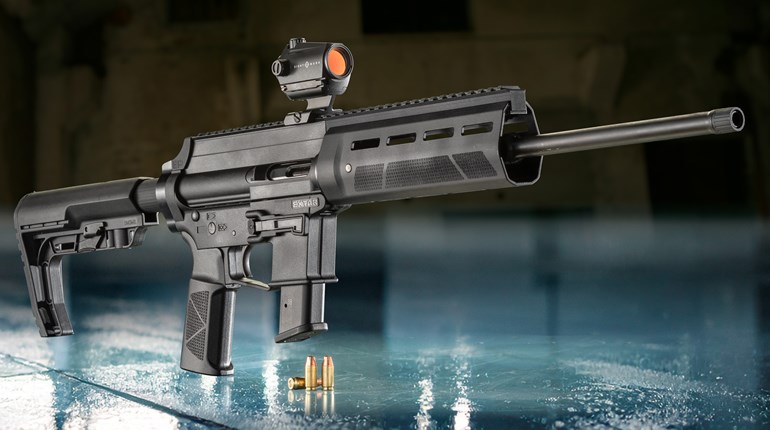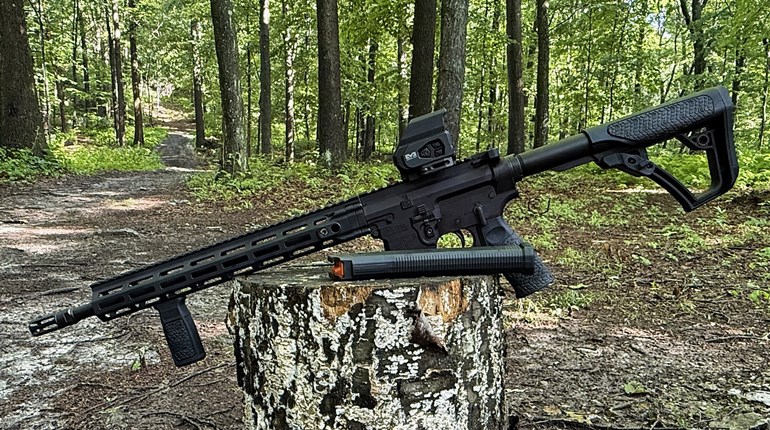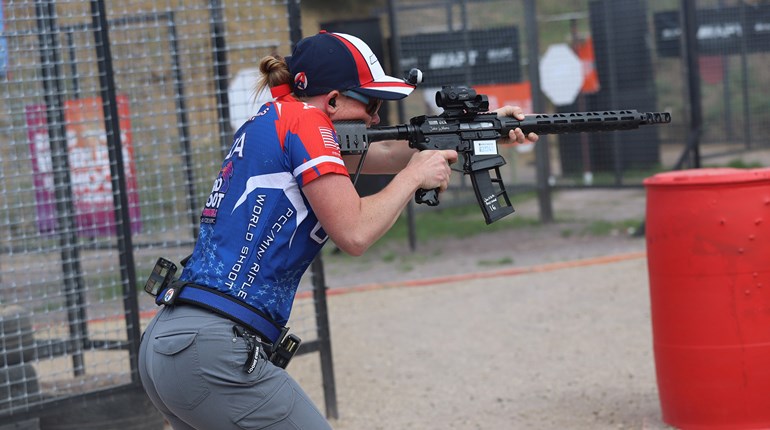
While we hope to not sully the true spirit of Christmas, we can’t help but look forward to some commercial aspects of the holiday. Mainly, we think, it’s because enough pages have flown from our personal calendar that “it is more blessed to give than to receive” rings true. It is a lasting joy to think carefully, spend wisely, and hit it out of the park when unwrapping time rolls around. Here, then, are a few more suggestions if you have a deserving shooter on your list.
JP Rifles: Practically anything
First Gear has put several JP products on your radar, or so we hope. From their trigger spring kits and pin systems for AR/Stoner pattern rifles—priced for bona fide stocking-stuffing—all the way up to complete rifles, we’ve yet to find something that didn’t prove to be “up to snuff.” Most have, in fact, been much better than that, though we often took our time properly appreciating that fact. That’s our own fault, and decidedly not that of the smart folks in Hugo, MN.

We have some favorites, though, and many meet a “gifting” spec, if there is such a thing: Not over-the-moon in terms of expense, and disproportionately likely to produce a sincere Christmas glee in a not-so-child.
The JP Silent Captured Spring and buffer system are a stand-out. We’ve shown you these before, and used them in several builds. While the “silent” part of the name is prominent, that’s just the beginning of the improvements wrought in widely varying takes on MSR/AR rifles. From blowback pistol caliber carbines up to the AR-10 (.308 Win/7.62x51), these are repeatedly the ticket.
The merely annoying “ka-WHANG” of the conventional buffer and round wire spring go first, making way for selectable spring rates and combinations of tungsten and/or steel weights to vary buffer mass. MSR shooters will know these can whittle down a host of discomfitures (even several seemingly unconnected to the recoil system), and yield a surprising docile and fabulously reliable rifle. We’re pretty sure a full complement of fingers and toes can’t count the degrees of delicacy the JP system puts at your disposal.
Competition is thick in the MSR trigger space, but it’s a punishing challenge to do better than the JP “EZ” system. Our introduction to these came buried in a 9 mm PCC, and after about 30,000 rounds, it’s still running strong. These are a formidable upgrade unless you’ve got a pretty high-end rifle, and even then–maybe. Take a look at the Armageddon “Roller” trigger variation if “upscale” (or “darn particular”) is your giftee’s middle name.
We expect there are a few shoppers looking for gifts of UU-caliber; that is “utterly unforgettable.” JP is a sure bet here as well, and we can vouch for either their GMR-series pistol caliber carbines or rifle-caliber guns.
Visit JP Rifles here.
SSP Eyewear
Good, safe eyewear is a constant battle for the dedicated shooter. First are costs implications: Nobody sensibly wants to economize on protecting their vision, yet it’s easy to drop 200 bucks on one of the most losable, breakable, great-for-others-but-stinks-for-me devices known to humankind.

This state of affairs only gets worse as you age. The muscles that support the ability of the eyes to move and focus slowly lose their youthful vigor, and sights, targets or both grow (infuriatingly) fuzzy. Optical supplementation comes in many forms and varying effectiveness, but this gets us back where we started: cost. It’s difficult to even try solutions without spending an arm and a leg. (Our last gambit was just shy of $800, and useless.)
Specialized Safety Products (SSP) of Moses Lake, Wash., may have the whole mess very cleverly on the run. Starting with the rugged polycarbonate and 100-percent UVA/UVB protection, they put separate lenses in front of each eye, but add a “cheater” bifocal panel that is user-positionable.
Huh? We don’t blame you if you’re still a tad lost. Just about anybody over 40 knows of the dreaded bifocal: Close accommodation is restored, but everything beyond three or four feet is sacrificed within the corrected field. The weird part is, we know surprisingly good shooting—especially with conventional notch-and-post sights—becomes possible again. The problem is the six o’clock position of the bifocal grind: An absurd “craning” of the neck—or inversion of your specs—is the only mechanism that gets the correction where you need it (barring the so-called “mechanic’s” version that puts the near-focus high on the lens instead of low).
For a grand total of $76—SSP’s “Denial” system plus matching upper bifocal correction—you’ll have smoked, amber and clear lenses that give unaltered central field vision, but let you put the correction where it does the most good.
Our configuration puts a small correction (1.25) high on the dominant side, right where we need it for clear pistol sights, and the same low on the other side—perfect for checking primer height as we load mags or other close-up work. Mid-field on both eyes is clear as a bell, meaning we keep tactical awareness, movement ability and target-to-target transitional acuity. When we go to carbine and a C-More dot, the bifocal panel isn’t needed; out it comes in about 30 seconds, and is replaced by a right-side, low bifocal (though zero magnification lenses are available too). Before you ask, they work just fine with contacts in.
We acknowledge a comparatively virulent prejudice of ours is catered to here, but it’s one that saves a lot of aggravation on the range: The lenses go in and out of the frames with almost comical ease, and due to the frame design, the process is fingerprint-free. Even if your vision is perfect (the “Chelan” setup, $35), this alone may be reason enough to give SSPs a try. If you really jack something up lens-wise? $12, worst case. Modest enough to buy spares on the front end so they’ll be around when actually needed—what a concept!
Particularly if you have a shooter who seems to struggle with head position—craning back especially, but forward and even side-to-side sometimes creep in, too—take a serious look at the SSP solution. They may prove to be a gift long remembered after the almost embarrassingly modest acquisition cost is long forgotten.
Visit SSP here.
Lone Wolf
Lone Wolf Distributors are a shopping-for-shooters “gimme,” if we can borrow that linkster terminology. We’ve used their products for years in many roles, though a favorite has been to shoot lead bullets in our Glock pistols. Glock factory barrels are superbly long-lived, but the same characteristic that makes that so—that is, polygonal rifling—means using jacketed-only projectiles. Lone Wolf was one of the first outfits to solve this problem, and even made caliber conversion a practical undertaking.

The caliber conversion business remains a bit of a poser for some, but think of it this way: Some .40 S&W pistols will reliably shoot 9 mm with the correct barrel—often, you don’t even need 9 mm magazines (though these do increase reliability). The payback is 4-6 months for a fairly serious shooter (figured from a 4-cent offset between 9 mm and .40), but the capability is a permanent add: Work the same trigger, sights and other gun mechanics at a small fraction of the cost of an additional pistol. Nor is .40 to 9 the only conversion available.
Known as a “Glock” house, this is now changing, with barrels for multiple Smith & Wesson models now stocked there in Priest River, Idaho, as well.
Barrels aren’t the only thing that draws us to Lone Wolf. We think their upgrade “Ultimate Adjustable” triggers for Glock pistols are among the best, as well as the least expensive. They feature excellent adjustability and superb install and adjustment instructions (a pet peeve of ours, we concede), though be sensible: Just because it can be a DIY task, doesn’t mean it should be. No harm in having your local gunsmith step in and get it 100 percent. And no matter who does the work, trigger work results are always vetted with no more than two rounds in the mag, and rinse/lather/repeat patience.
Take a squint at our inset, and another Lone Wolf expertise fairly jumps off the page, er, screen: custom slides. If your gift recipient has a yen to build a unique Glock-type pistol, we guarantee one thing— (almost) too many choices. Between decorative and functional slide cuts—we counted 20-plus—and finish options (here we simply lost count), a breathtaking one-off is at your fingertips.
You don’t even need to have a Glock to get started. Lone Wolf has their Timberwolf frame as a possible starting point; polymer like the Austrian original, but with a shallower, 1911-like grip angle.
Like we said: A gimme.
Visit Lone Wolf Distributors here.
Frank Winn has been studying arms and their relationship to tyranny, meaningful liberty and personal security all his adult life. He has been a firearms safety/shooting instructor for more than 20 years, and earned state, regional and national titles in several competitive disciplines.

































